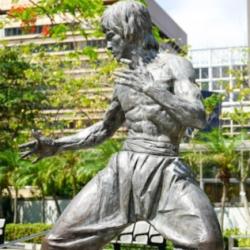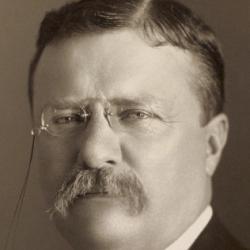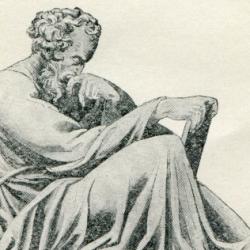It’s an interesting existential perspective, that “beliefs” are actually “becoming”.
In many cases, it makes sense to consider “beliefs” as impersonal propositions, like believing your dog will fetch a ball based on previous experience. Perhaps it can be defined as a degree of trust, whether or not well deserved, or an inclination towards a given truth. At the same time, depending on the proposition, the word belief, without an existential commitment or way of life, is completely deficient. Does one truly believe, for example, in physical fitness if they exercise rarely and eat processed foods frequently? The more personal the belief, the deeper the call to its existential commitment, to be is to believe. Belief in monogamy means nothing without a life reflected in such a way.
Kierkegaard is famous for the sentiment that the “truth is subjectivity”. Often misunderstood, it’s not the idea that the rational propositional (say of physical fitness or monogamy) is relative. It’s that objective truth without subjective embrace is self-refuting. Ceasing to be is ceasing to believe. As he stated in Journals and Papers, “I certainly do not deny that I still accept an imperative of knowledge and that through it men may be influenced, but then it must come alive in me, and this is what I now recognize as the most important of all.”
In considering the proposition “belief in Christianity”, all sorts of philosophical, apologetic, and historical neurons begin to fire for most believers – enter the systematic theology and doctrines – layer on the commonly held political views and prescribed cultural milieu. These, often times, become the mark of the Christian and sadly the picture of the Teacher is covered up. To take a line from Ghandi, “I like your Christ, I do not like your Christians. Your Christians are so unlike your Christ.” To this sentiment, Kierkegaard’s challenge:
“What I really need to get clear about what I am to do, not what I must know, except insofar as knowledge must precede every act. What matters is to find purpose, to see what it really is that God wills that I should do; the crucial thing is to find a truth that is a truth for me. to find the idea for which I am willing to live and die. Of what would it be to me to discover a so called objective truth, to work through philosophical systems so that I could, if asked, make critical judgments about them, could point out the fallacies in each system; of what use would it be to me to be able to develop a theory of the state, getting details from various sources and combining them into a whole, and constructing a world I did not live in but merely held up for others to see; of what use would it be to me to be able to formulate the meaning of Christianity, to be able to explain many specific points – if it had no deeper meaning for me in my life? …
Singing the same tune is philosopher and theologian Peter Rollins. As his pyrotheology is thought of as far-out by many traditionalists, he’s frequently taken to task on specific doctrines that he rarely addresses. Take belief in the Resurrection, for example, what could be more fundamental to Christian belief? With such a focus on deconstruction and existentialism, has he forsaken the central dogma or belief of Christianity? And so when pressed, Rollins had to come clean with a thought-provoking answer:
“Without equivocation or hesitation I fully and completely admit that I deny the resurrection of Christ. This is something that anyone who knows me could tell you, and I am not afraid to say it publicly, no matter what some people may think… I deny the resurrection of Christ every time I do not serve at the feet of the oppressed, each day that I turn my back on the poor; I deny the resurrection of Christ when I close my ears to the cries of the downtrodden and lend my support to an unjust and corrupt system. However there are moments when I affirm that resurrection, few and far between as they are. I affirm it when I stand up for those who are forced to live on their knees, when I speak for those who have had their tongues torn out, when I cry for those who have no more tears left to shed.”
Image Credit:
Author: Brian O’Neill
Source: Wikemedia Commons

















